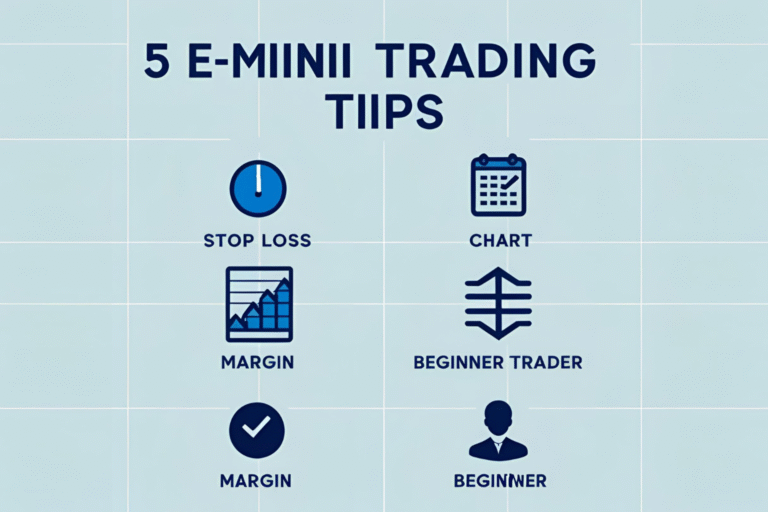Risk Management for E-mini Futures Trading
Risk management is one of the most critical aspects of trading E-mini futures like the S&P 500 (ES) and Nasdaq 100 (NQ). Without a solid strategy to manage risk, even the most promising trades can lead to significant losses. This guide walks you through practical risk management principles tailored specifically to the E-mini futures market.
Why Risk Management Is Essential in E-mini Trading
E-mini futures offer leverage, meaning you can control a large position with relatively small capital. While this opens up profit opportunities, it also increases risk exposure. A small market move against your position can wipe out your trading account without proper controls.
Key Risk Management Techniques for E-mini Traders
1. Set a Maximum Loss Per Trade
Establish a clear maximum dollar amount or percentage of your capital that you’re willing to lose on any single trade—typically 1–2%. For example, if you have a $10,000 trading account, limit your loss to $100–$200 per trade.
2. Use Stop-Loss Orders Effectively
Always place a stop-loss when entering a trade. For ES futures, consider recent price levels, support/resistance, or ATR (Average True Range) to set realistic stop levels. Never trade E-minis without a stop.
3. Manage Position Sizing Based on Volatility
Position sizing should reflect current market volatility. For instance, in highly volatile conditions, trade fewer contracts to reduce risk. Use tools like the margin calculator and tick value understanding to size accurately.
4. Avoid Overtrading
E-mini markets are fast-moving, which can tempt traders into taking too many trades. Focus on quality over quantity—only act when your strategy conditions are met.
5. Have a Daily Loss Limit
Just like setting per-trade loss limits, it’s wise to cap how much you’re willing to lose in a day. If you hit your limit, step away from the screen. Trading under emotional pressure increases the chance of errors.
Common Mistakes to Avoid
- Skipping Stops: Hoping the market will turn around without a stop-loss is a fast track to disaster.
- Adding to Losing Positions: Doubling down on a losing trade rarely ends well.
- Neglecting Risk-Reward Ratio: Always aim for at least a 2:1 reward-to-risk ratio.
Final Thoughts
In E-mini futures trading, managing risk is not optional—it’s essential for long-term survival and success. With discipline and the right rules in place, you can trade ES and NQ contracts confidently while protecting your capital.
FAQs
What is a good stop-loss for ES futures?
It depends on market volatility, but many traders use a 5–10 point stop depending on their strategy and account size.
How much capital do I need to trade E-mini futures safely?
While you can start with as little as $2,000, having at least $5,000–$10,000 is recommended for proper risk management.
Should I use trailing stops in E-mini trading?
Yes, trailing stops can help lock in profits while allowing the trade to breathe during trends.
Is risk management different for ES and NQ futures?
Yes, NQ tends to be more volatile than ES, so position sizing and stop-loss levels may differ accordingly.
Can I trade E-mini futures part-time with proper risk rules?
Absolutely. Many part-time traders succeed by focusing on specific sessions (like U.S. open) and applying strict risk rules.



